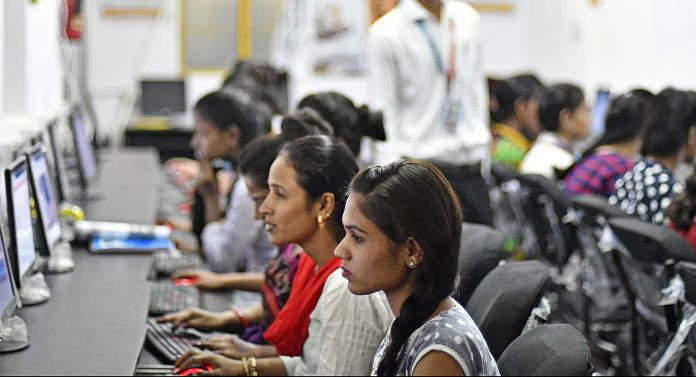The Indian IT sector once celebrated as the backbone of the country’s white-collar workforce is going through one of its worst phases in decades. The industry, which employs over 5 million professionals and contributes nearly 10% of India’s GDP, is now grappling with mass layoffs, delayed hiring, shrinking revenues, and a rapidly changing global technology landscape.
What’s Happening?
Over the past year, leading IT companies like TCS, Infosys, and Wipro have reported slowing growth and reduced hiring. TCS recently announced layoffs affecting 12,000 employees, while thousands of fresh graduates with offer letters are still waiting for their joining dates.
Traditionally, Indian IT thrived on cost arbitrage offering the same work as Western engineers at a fraction of the price. But the same model that brought success is now turning into a liability.
Why Is the Industry Struggling?
1. Rise of Artificial Intelligence (AI)
For decades, Indian IT firms specialized in basic coding, software testing, and support services. AI can now do much of this work faster, cheaper, and with fewer errors. From automated testing to AI-driven customer support, the demand for lower-level IT services is shrinking.
Example: Indian fintech startup PhonePe reduced its customer support team by 60% using AI tools.
2. Global Economic Pressures
- US Market Changes: The US accounts for 60% of Indian IT revenue. New tax rules remove deductions for outsourcing work overseas, making Indian IT services costlier for American companies. Some proposals even include a 10% penalty on offshoring.
- European Recession: Europe, the second-largest market, is cutting IT budgets, canceling contracts, and moving work in-house.
3. Skills Gap in Emerging Technologies
Reports show India faces a shortage of 1 million AI professionals. Even though there are millions of engineers in IT, many lack the advanced skills needed for AI, machine learning, blockchain, and cloud innovation.
Infosys founder Nandan Nilekani himself admitted that the focus on service-based work left companies lagging behind in innovation.
When Did This Begin?
The slowdown has been building for years but became starkly visible in FY26 Q1 results, where companies posted some of their lowest growth rates in history often in single digits or even negative.
Where Is the Impact Felt Most?
- Metro IT hubs like Bengaluru, Hyderabad, Pune, and Chennai are seeing stalled hiring and increased competition for jobs.
- Tier-2 cities, which benefited from IT expansion in the last decade, are also facing reduced project inflows.
Who Is Affected?
- Experienced engineers with a decade or more in service roles now face redundancy.
- Fresh graduates are stuck in limbo, with offers delayed indefinitely.
- India’s economy risks losing a key growth driver if the trend continues.
How Can the Industry Survive?
Experts say survival depends on rapid transformation:
- Upskilling Workforce: Focus on AI, cloud, cybersecurity, data science, and product innovation.
- Shifting from Services to Products: Building original, high-value software products rather than just implementing client ideas.
- Government Support: Incentives for R&D, AI research funding, and global market access.
The Bigger Picture
For 30 years, Indian IT powered the country’s rise as a global tech powerhouse. But with cost advantages eroding, automation replacing jobs, and global markets shifting inward, the sector is at a crossroads. Without bold changes, millions of jobs could vanish, and India could lose one of its most successful export industries.
The clock is ticking and whether Indian IT reinvents itself for the AI age will decide if this is a temporary slowdown or the start of a long decline.


